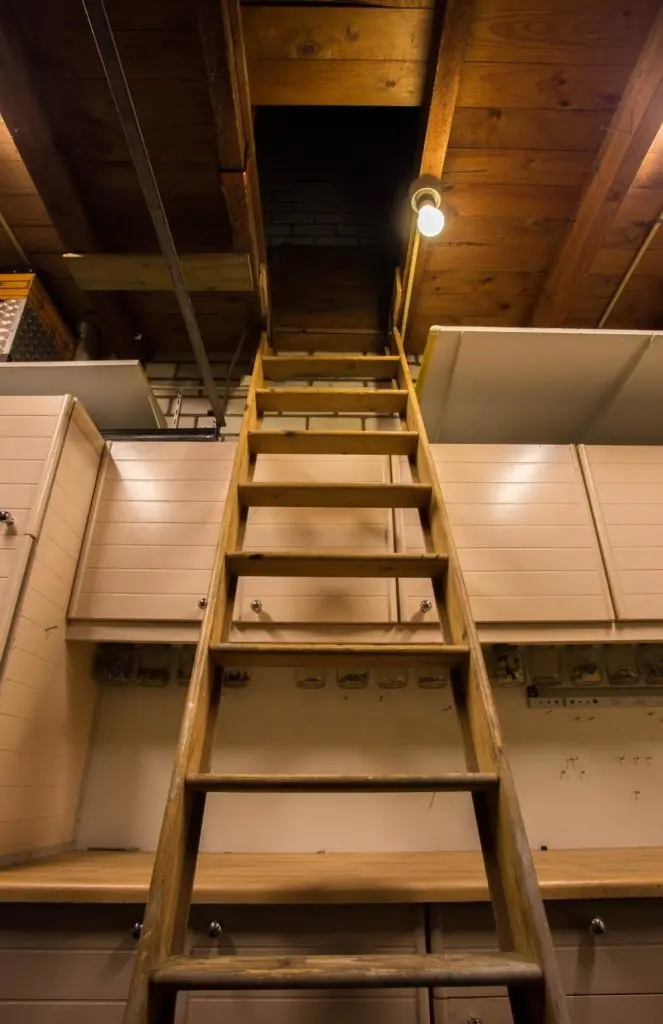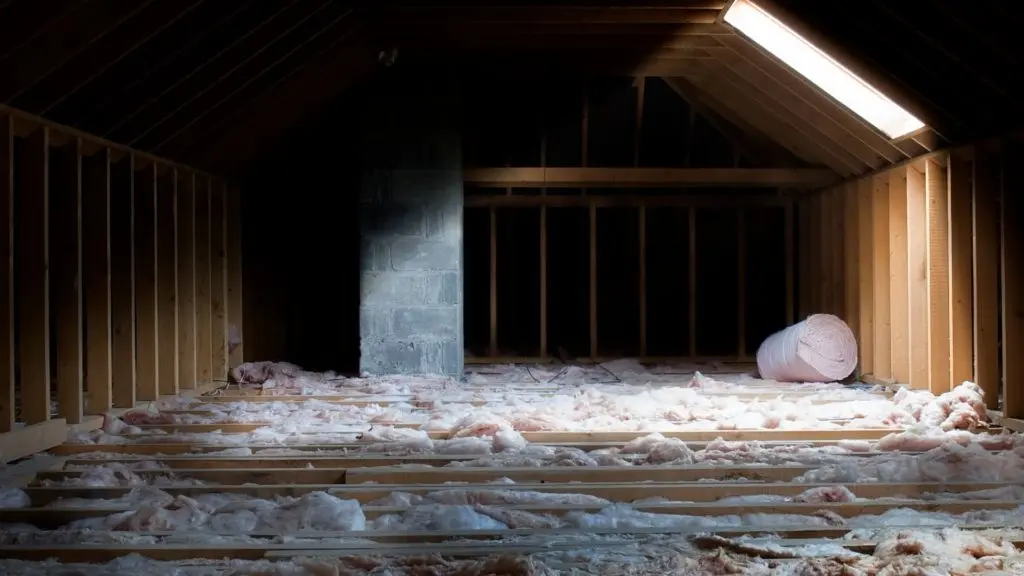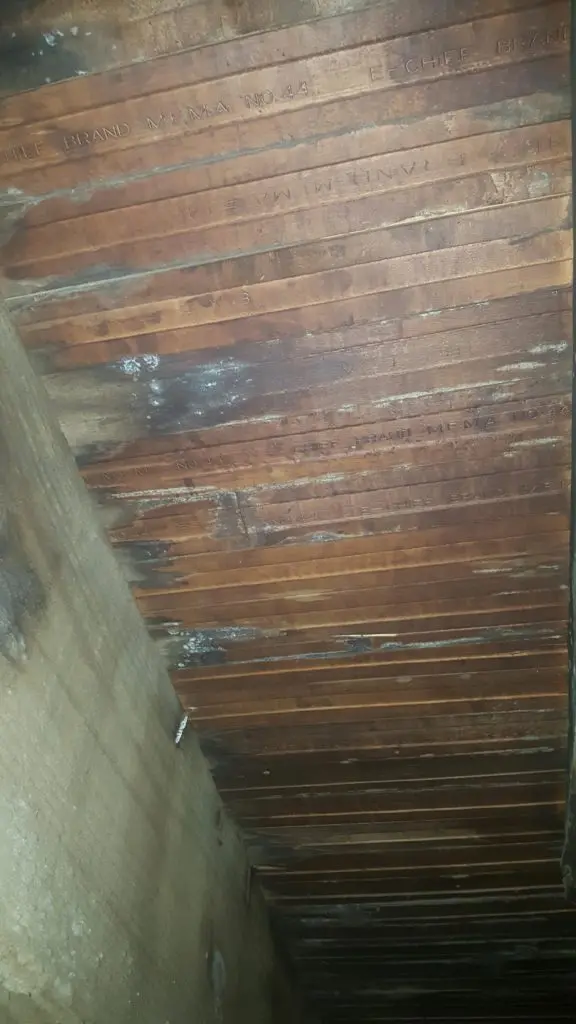Attic mold is most often detected by the home or business owner when they see white, green, or black growth forming on the wood framing. Typically attic mold will be very obvious even to the untrained eye. Any signs of mold growth in the attic should be immediately addressed with attic mold removal services as it has the ability to rapidly spread once mold begins to grow.
Attic Mold Cleaning Process & Timeline
Attic mold removal and remediation is a very similar process to other types of remediation. Critical containment of the space, use of an air scrubber, HEPA vacuuming of the affected wood joists, application of a fungicide, and the final step of encapsulation of the affected wood structures with an antifungal retardant. The typical attic mold remediation can be done in one long day or sometimes a second day if the attic is large or insulation must be removed and replaced. There are situations where performing an attic mold removal and remediation can be more difficult than others, however. Unlike most basements, attics are not always built for people to be crawling around with heavy equipment. Items such as floorboards or other pathways are not always present. Then there are the attics that have a low height profile which means the technicians must crawl while performing their tasks and this can sometimes add to the time and cost of attic remediation.
The final potential obstacle for performing an attic mold removal and remediation is the time of year. Spring, fall, and winter generally do not pose any risks for the technicians. That cannot be said for the summer season which can cause the temperature in the attic to soar above 130F. When this happens, the attic space must be cooled with a portable air conditioning unit and the technicians must perform their tasks in 30-minute intervals and then take a break. The staff at MSE will advise the homeowner when these health and safety protocols must be implemented.


Is Attic Mold Removal Necessary?
Attic mold, just like mold in any part of the home, must be addressed immediately. Besides the obvious damage to the wood and cross-contamination of personal items stored in the space, attic mold tells us that we have a moisture problem and that alone is cause for alarm. There is no place in a home or business where mold can be ignored. We spend most of our time in our bedrooms when we are at home and so it is especially important to make all adjoining spaces safe.
Is attic mold dangerous and can it spread to the rest of your home?
Attic mold is no different than mold in any part of a structure and some experts will argue that it is worse because of the proximity to bedrooms. People spend the majority of their time in the home in their bedrooms sleeping. Having a source of poor air quality directly above this space should bring a sense of urgency to have the mold cleaned and removed. The other factor that should be noted is that a common cause of attic mold is over-insulation of the space. A common misconception about insulation is ‘the more the merrier’.
This could not be further from the truth. Having the right amount of insulation in your attic will not only prevent problems like mold growth but will also go a long way in saving on energy costs. An overly insulated attic will make the space overheat during the summer months and that will add to cooling costs. In the winter too much insulation can cause condensation in the attic and that leads to wet rot of the roof system and ultimately to mold growth. Having the proper level of insulation is very important.

Attic Mold FAQs
Is attic mold a big deal?
Mold in the attic can obviously cause adverse health effects as the attic is the lungs of any house. Air in the attic is typically exchanged between the air of the living area directly below it which is often times bedrooms. Most importantly, mold in the attic is a sign you have a moisture problem and that can lead to VERY costly repairs to the roof underlayment and framing. Learn about the health dangers of mold.
Additionally, it might cost you more money if not repaired in a timely manner because it can spread throughout the house. Contact Moisture Science to schedule your attic mold testing.
Do air purifiers help mold?
Air purifiers will remove most airborne mold spores from the air if placed in the room where the source of the mold contamination is. However, if you have a significant mold issue, air purifiers only act as a band-aid and do not properly address the underlying moisture issue and will not prevent mold from spreading to other locations.
Will a dehumidifier help with mold?
Mold spores start rising with an increase in the humidity in a given space. A dehumidifier may help slow the growth and, in some cases prevent mold and mildew, but it isn’t meant to be a remedy for complete mold management.
If you have any questions about mold management in your attic or home, please email Moisture Science: a trustworthy mold removal company: info@moisturescience.com
What does attic mold look like?
Condensation is the #1 cause of mold in an attic because the attic is not properly vented. The most common place to see mold in an attic is on the underside of the roofing plywood. The mold will appear as either black, green or white blotches and if you look closely these blotches will actually be fuzzy. A leaky roof, improperly installed insulation, overpacking personal items are all causes of mold, so also look for water damage such as patchy marks on the floors and walls.
A professional attic mold remediation company such as Moisture Science will help you determine if you have a mold problem in your home or business. If you are located in the Greater Philadelphia area or New Jersey, please call: (609) 314-3528

